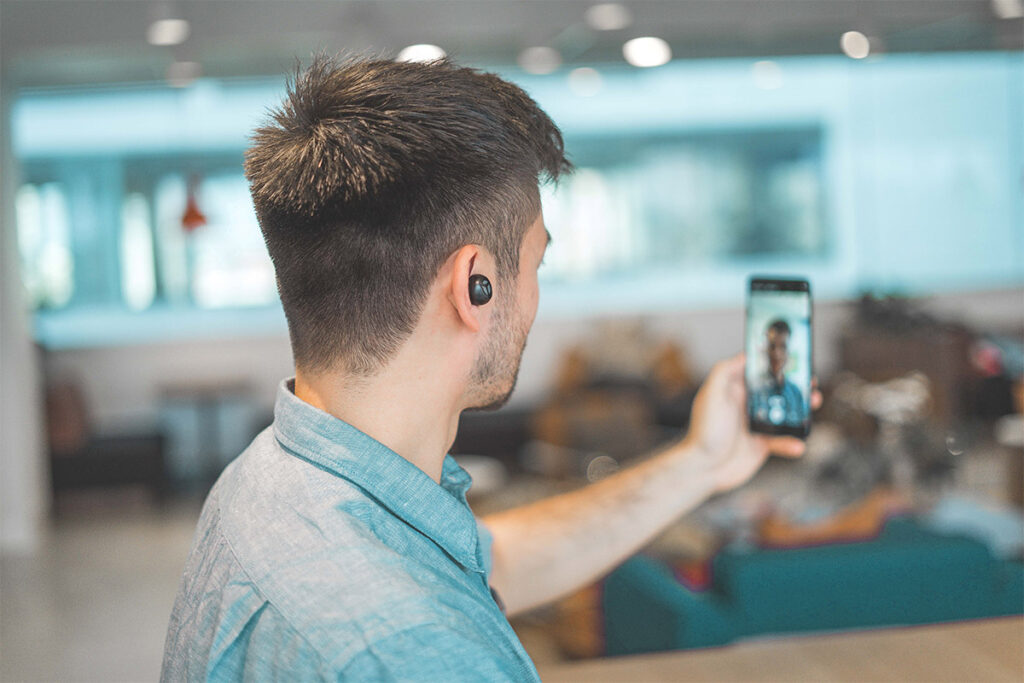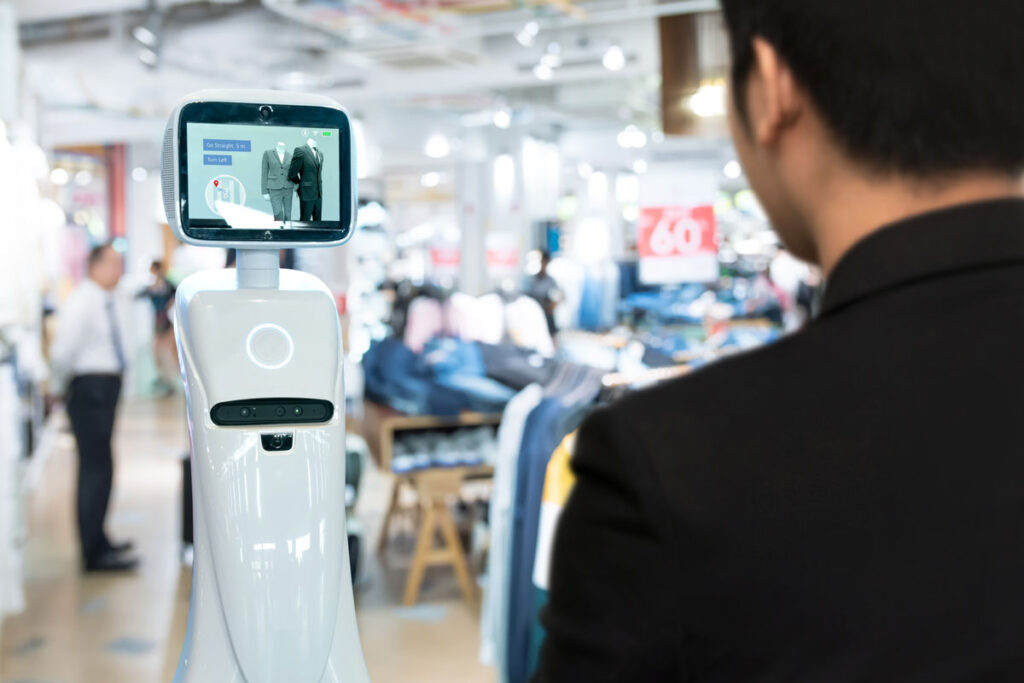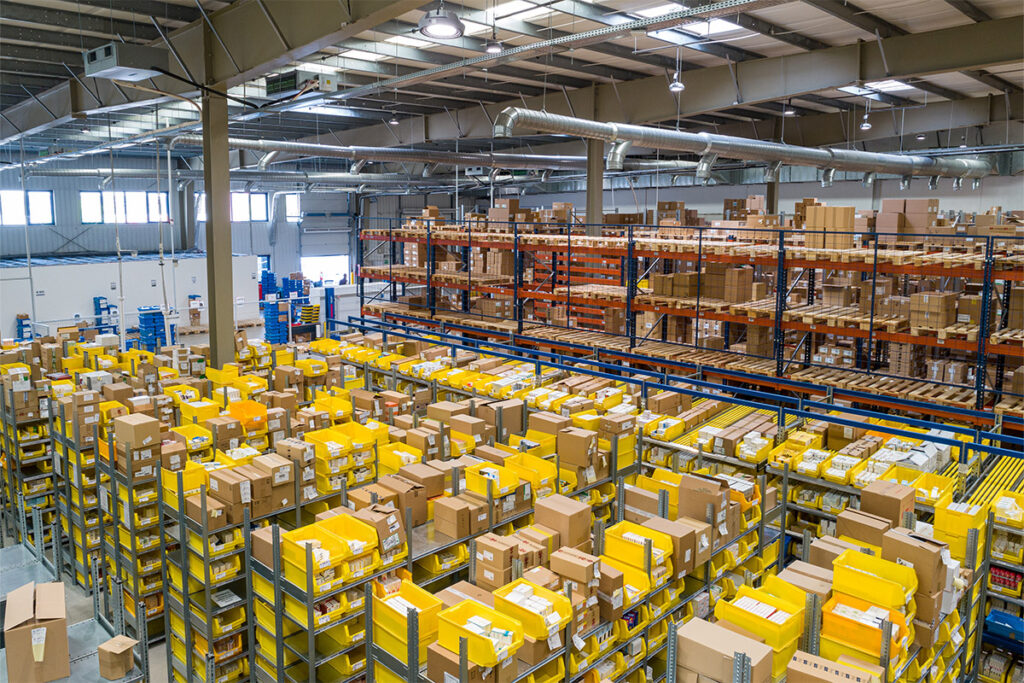As we all know, the retail industry is facing a labor shortage that’s putting a lot of pressure on employees. Help is on the way–but it’s not in the form of more human workers; it’s AI in retail.
Retailers are turning to conversational AI solutions like chatbots and virtual assistants to automate customer interactions and ease the workload on their staff. This is just one of the ways that retailers are using artificial intelligence to stay competitive in the face of mounting challenges. According to Deloitte’s 2023 Retail Industry Outlook, 7 in 10 executives say labor is their biggest challenge this year.
AI is also helping retailers gain insights into consumer preferences, optimize inventory management, and improve multiple aspects of their operations. And the best part? Consumers love it too because it provides them with a more personalized experience.
So, what does this mean for the future of retail? And how can your business take advantage of the benefits that come with integrating AI technology into your operations?

How AI is Benefitting Retail
In this uncertain and at-times turbulent economic market, retailers are looking for ways to differentiate themselves. Many are finding success against mounting competition by turning to AI programs. Here are some of the ways retailers are seeing benefits, thanks to assisted artificial intelligence.
Enhanced Customer Experience
AI can create more personalized experiences for customers and quickly resolve any issues that arise, leading to increased brand loyalty.
Assisted AI technology uses various tools like sentiment analysis, churn prediction and customer feedback analysis to provide retailers with valuable insights into consumer satisfaction. By analyzing customer behavior and habits, retailers can gain a deeper understanding of their target audience and provide personalized recommendations that are more likely to resonate with customers.
Companies like Marriott and Hilton use AI-powered chatbots to provide guests with 24/7 customer support and help, including booking and reservation management. These chatbots can quickly respond to guest inquiries and provide personalized recommendations for nearby restaurants, attractions and activities, creating a more personalized and engaging experience for guests.

Personalized Offers Become Key Driver to Success
Consumers want personalized experiences; today’s successful retailers are using insights from consumers’ preferences to deliver highly personalized product recommendations.
One of the largest companies in the world, Amazon, uses AI technology to analyze customer behavior and provide personalized product recommendations, which has been a key driver of the company’s success.
Amazon’s recommendation system uses machine learning algorithms to analyze customers’ past purchases, browsing history and other data to recommend products that the customer is most likely to buy. This personalized approach has been shown to significantly increase customer engagement and drive sales.
Lily AI has also partnered with companies like thredUP to improve customer engagement and sales through enriched product data. ThredUP was facing the challenge of managing a large volume of product listings, which made it difficult to provide accurate and personalized recommendations to customers. To address this issue, thredUP turned to Lily AI, an AI-powered product data enrichment platform.
Lily AI uses natural language processing (NLP) and computer vision technology to analyze product images and descriptions and extract valuable data points, such as color, material, style, and pattern. This enriched data is then used to create more exact and personalized product recommendations for customers.
The partnership has resulted in a 15% increase in sell-through rates with a 2% conversion rate lift for customers who have purchased more than two times.

Virtual Try-ons Reducing Returns
Virtual try-on features powered by AI technology are becoming increasingly popular in the e-commerce industry, particularly for products like apparel, eyewear and cosmetics. These features allow consumers to see how a product will look on them before making a purchase, reducing the risk of disappointment and returns.
Snap, the parent company of Snapchat, is taking this trend to the next level with its recent rollout of AR Enterprise Services (ARES). With ARES, Snap is aiming to lead the charge in augmented reality by enabling businesses to integrate Snap’s AR technology into their own apps, websites and physical locations.
For example, an eyewear company can use Snap’s virtual try-on technology to allow customers to see how different frames will look on their face in real-time. A cosmetics company could even use virtual try-on technology to enable customers to test out different makeup looks before making a purchase.
Snap’s AR technology is powered by machine learning algorithms, which enable the technology to accurately track and render virtual objects in real-world environments. By offering businesses the ability to integrate this technology into their own platforms, Snap is creating a more seamless and integrated shopping experience for consumers.
AI Optimizing Inventory Management
Inventory management is a crucial aspect of retail operations, and predictive analytics powered by AI technology can play a significant role in optimizing it. By analyzing consumer data and sales trends, predictive analytics algorithms can forecast demand for specific products, allowing brands to adjust inventory levels accordingly and reduce the risk of overstocking or understocking.
Walmart–with its extensive network of approximately 4,700 stores and 600 Sam’s Club locations across the United States and a workforce of roughly 1.6 million people (about the population of West Virginia) and vast data resources – has been able to use the capabilities of AI to enhance the shopping experiences of its customers.
With an AI-based system, Walmart can find the most effective action to take when a product is out of stock in the stockroom but scheduled to arrive on the same day. The algorithm directs the associate to take the product directly to the sales floor instead of the stockroom.
Anshu Bhardwaj, senior vice president of tech strategy and commercialization at the retail giant, says since its introduction in 2022, this approach has increased employee productivity by 15%. AI-powered predictive analytics can help brands like Walmart optimize their inventory management and reduce the risk of overstocking or understocking, resulting in increased productivity and a better shopping experience for its customers.

AI Changing Warehouse Operations
AI technology has become a game-changer in optimizing warehouse logistics operations. Warehouse robots equipped with AI algorithms can process orders efficiently and evaluate all variables before making decisions, allowing them to adapt quickly to changing situations.
By using AI technology, warehouse robots can optimize routes, deliver end-to-end visibility and increase the accuracy of orders being picked, packed, and shipped.
Amazon’s use of AI-powered robots in its warehouses has revolutionized the way the company processes orders. The robots move around the warehouse, scanning barcodes on items and carrying them to the designated picking area, where human workers then pack them into boxes. This process has increased efficiency by reducing the time it takes for workers to retrieve items from the shelves, ultimately leading to faster order processing times.
Amazon began using robotics in its warehouse facilities in 2012, and since then, the company has increased its workforce by 1 million humans worldwide while at the same time deploying 350,000 mobile drive unit robots.
Predictive maintenance algorithms can also analyze data from sensors installed in machines and equipment to detect potential issues before they cause any disruption in the warehouse’s operations. These proactive steps can prevent unexpected downtime, reducing the risk of lost revenue and customer dissatisfaction.

What Do Consumers Think?
Despite some initial hesitation that consumers may have felt about AI, studies show that the majority recognize the benefits artificial intelligence brings to retail–and consumers are increasingly embracing it to improve their own shopping experiences.
A RedPoint Global survey found that although 45% of respondents said they had a lack of understanding in how AI technology has been implemented in retail, nearly 75% said they believe there is potential for AI to impact customer experience in the future.
A survey by LifePerson showed most shoppers (62%) have a positive perception of engaging with chatbots, while 68% say automated systems that help them resolve their issues faster impacts their brand loyalty.
This same survey discovered that, unsurprisingly, younger shoppers are more receptive to utilizing chatbots and other AI forms. In fact, 80% of shoppers aged 18 to 24 viewed engaging with chatbots positively, while 60% of this demographic preferred interacting with chatbots over humans to find a product.
This consumer data makes one thing clear; retailers must be ready for an AI-driven future. AI and automation have become crucial tools for retailers who want to remain competitive and offer better experiences for their customers.





